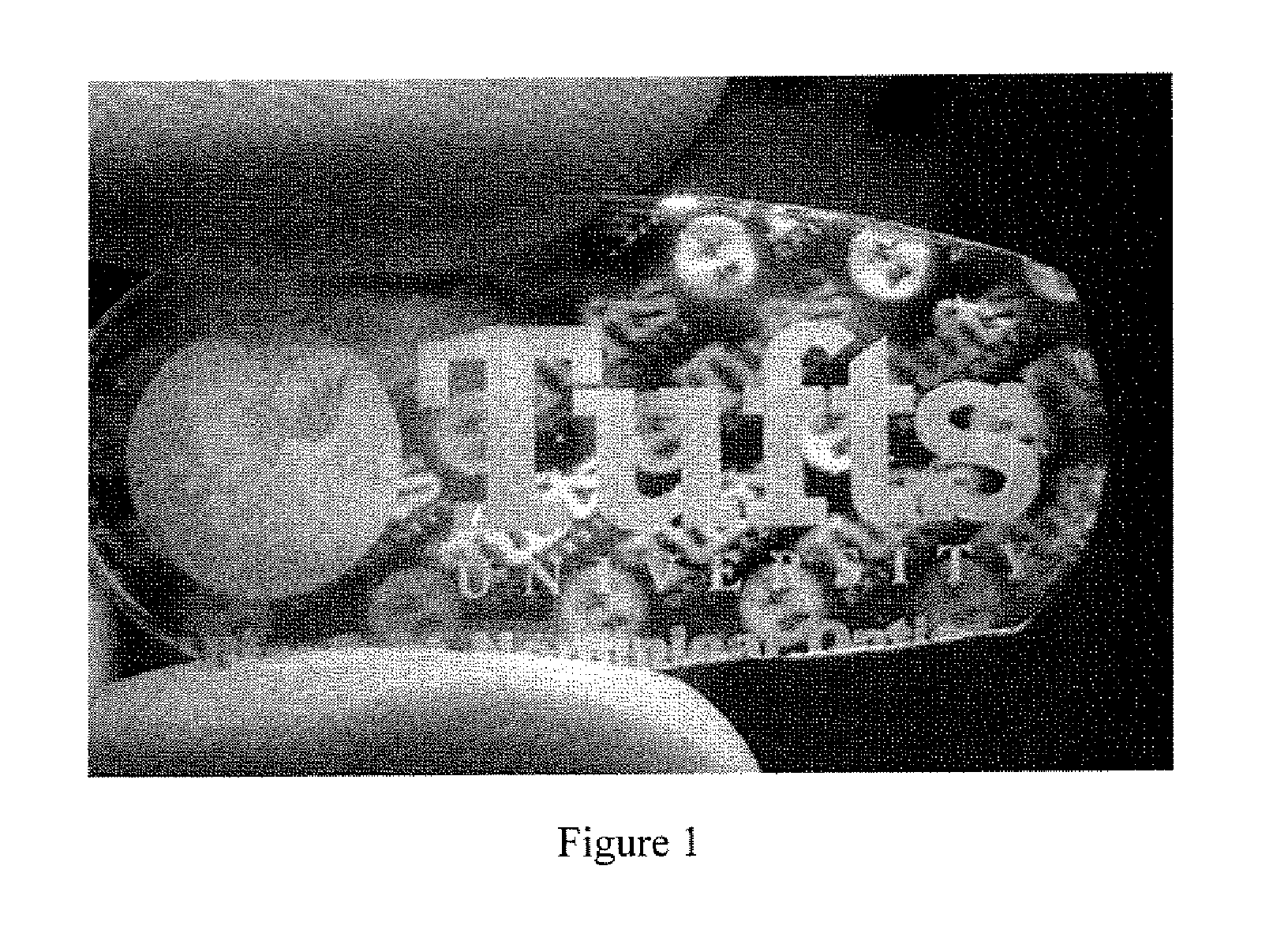Edible holographic silk products
a silk product and holographic technology, applied in the field of holographic silk products, can solve the problems of not providing such bar-codes or other means of identification, and the current paper-based stickers are often difficult to remove,
- Summary
- Abstract
- Description
- Claims
- Application Information
AI Technical Summary
Benefits of technology
Problems solved by technology
Method used
Image
Examples
example 1
Silk Hologram by Casting Silk Fibroin Solution on Appropriate Surface
[0040]Production of the silk fibroin solution begins with the purification of harvested B. mori cocoons. Sericin, a water-soluble glycoprotein which binds fibroin filaments, is removed from the fibroin strands by boiling the cocoons in a 0.02 M aqueous solution of Na2CO3 for 45 min. Upon completion of this step, the remaining fibroin bundle is rinsed thoroughly in Milli-Q water and allowed to dry overnight.
[0041]The dry fibroin bundle is then dissolved in a 9.3 M aqueous solution of LiBr at 60° C. for 4 hr. The LiBr salt is then extracted from the solution over the course of three days, through a water-based dialysis process. The resulting solution is extracted from the dialysis cassette (e.g., Slide-a-Lyzer, Pierce, MWCO 3.5K) and remaining particulates are removed through centrifugation and syringe based micro-filtration (5 μm pore size, Millipore Inc., Bedford, Mass.). This process enables the production of 8%-1...
PUM
| Property | Measurement | Unit |
|---|---|---|
| pore size | aaaaa | aaaaa |
| temperature | aaaaa | aaaaa |
| biocompatible | aaaaa | aaaaa |
Abstract
Description
Claims
Application Information
 Login to View More
Login to View More - R&D
- Intellectual Property
- Life Sciences
- Materials
- Tech Scout
- Unparalleled Data Quality
- Higher Quality Content
- 60% Fewer Hallucinations
Browse by: Latest US Patents, China's latest patents, Technical Efficacy Thesaurus, Application Domain, Technology Topic, Popular Technical Reports.
© 2025 PatSnap. All rights reserved.Legal|Privacy policy|Modern Slavery Act Transparency Statement|Sitemap|About US| Contact US: help@patsnap.com


